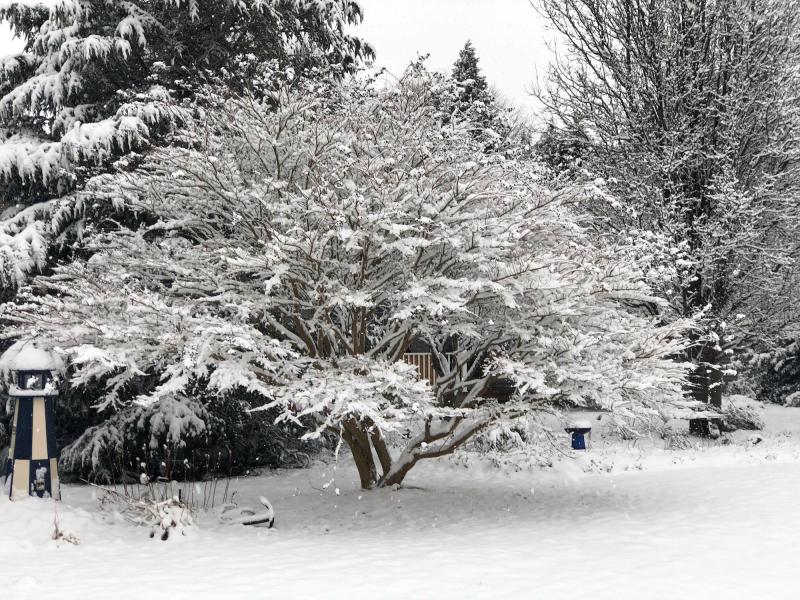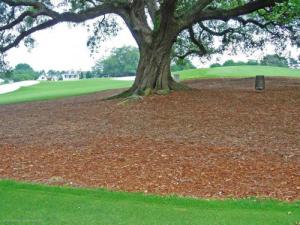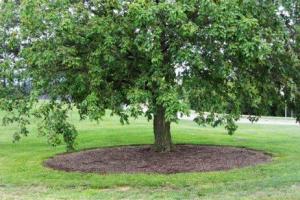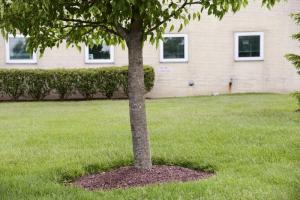For the love of trees

The Lorax is known for speaking for the trees, but locally there is horticulture agent Tracy Wooten. Many times people see their neighbor top trees or make mulch mountains and think that’s the way it should be done, but a little research may offer more sensible options. The University of Delaware Cooperative Extension Agency has compiled a substantial resource online with lists of plant suggestions, pruning and composting guides, garden schedules and information about benefits of soil testing.
“The Delmarva Peninsula has many micro-climates. We might be in zone 7, but those living on the coast have different challenges than those living in western Sussex,” said Wooten. In addition to online resources, there is an Ask An Expert form for specific questions at extension.udel.edu/ask.
Wooten suggests that when planning your landscape, the first consideration is correct placement. “If the tree’s parentage says ‘I’m a 50-70-foot tree,’ it will always strive to be that size,” she said. Space your plants based on their size at maturity, and consider buildings and power lines when choosing.
“If you need an immediate barrier and plant 10 Leland cypress where five would grow comfortably, once they get established, for the health of the trees you should go in and cut every other one down,” Wooten said. Supports for trees can be useful, especially when they’re planted in a windy location, but remove them about a year later to prevent damage to the tree, such as girdling.
Trees can be expensive, so a little planning can save money in the long run. “Many people miss the boat on soil testing,” Wooten said. “If you are making an investment in a tree, a $15 soil test is a good bet. Know you are doing everything for good growth.”
In the Cape Region, soils tend to be a little acidic, Wooten said, but it depends on microflora in the soil. Building materials can elevate pH and make essential nutrients unavailable. Mix in the proper organic matter if the soil test suggests it, and that will result in greater tree survival. “Don’t add what you don’t need - nutrients in the soil allow plants to make their own food,” she said.
In addition to pH, Wooten said compacted soil can cause tree failure. “Don’t dig a $10 hole for a $100 tree,” she said. Prepare the site by digging a hole that is two to three times wider than the root ball and deep enough to plant the tree at its original depth or slightly higher. Look for trunk flare, the point where the roots begin to branch from the trunk. This should be visible above ground level.
Which brings us to mulch mountains. “It’s wrong if you can’t see a flare at the base of a tree. I don’t want to see a telephone pole,” Wooten said. Most tree roots grow horizontally from the tree in the top foot of soil. Small fibrous feeder roots grow there, since that is where the water and nutrients are. Adding too much mulch can smother a tree; a two- to three-inch layer of mulch is sufficient, she said.
The practice of topping trees, also called heading, stubbing or dehorning, is done to control the size and growth habit. But Wooten said it shows poor tree selection and misinformation about pruning. In addition to leaving ugly results, topping trees can cause starvation and shock, and leave wounds that invite insects and decay.
Trees under power lines are frequently topped, but so are crepe myrtles, presumably to reduce size and leaf litter. This practice, often called crepe murder, causes a weaker union when branches regrow, destroys the structural beauty of the plant and eventually can cause death. Proper pruning techniques can be used to maintain size and reduce seed pods. A tree owner’s manual with planting, pruning, buying, and maintenance guides is online at extension.udel.edu/lawngarden/plant-selection-design/new-to-delaware.
“I love natives, but I’m not a purist,” Wooten said. “But we have to be aware of traveling seeds. They are a real thing; either by wind or birds, the invasive species are here.” Invasive plants may be introduced by accident or intentionally to control erosion, provide wildlife food and habitat, or for ornamental value in gardens. Packing material can harbor seeds or plant parts, she said. On the cooperative extension website is a Livable Delaware series that includes lists of native species, invasive plants, and tips on livable ecosystems, controlling invaders, and managing a healthy lawn.
The website also has a link to the UD soil testing program to order kits and learn to collect a sample. It also offers a summary of five different available tests.
For information on the do’s and don’ts of gardening in Delaware, go to extension.udel.edu/lawngarden.




























































